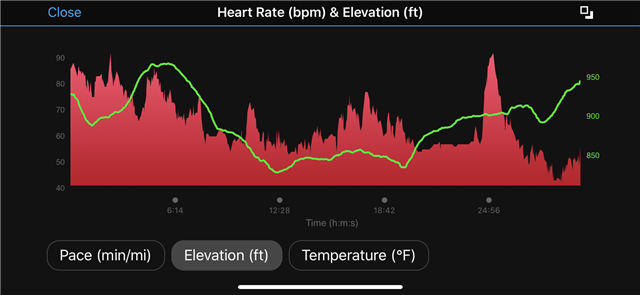Table Of Content
A heart rate of 150 bpm, for example, may fall into the category of vigorous exercise for most adults. However, age, recent activity, and other factors will affect this. A doctor can work with you to establish your target heart rate and range. Additionally, factors like age, activity level, and certain medications can also impact your resting heart rate. The sinus node signals the heart to speed up during exercise or in situations that are stressful, frightening or exciting.
Medical Professionals
However, a heart rate of over 100 bpm that occurs with shortness of breath or chest pain may be dangerous. In addition to age, a few other factors can affect your resting heart rate. The better shape you're in, the slower your heart rate will be when you're not moving around. "It might be OK to have a resting heart rate of 80, but it doesn't mean you're healthy," Steinbaum says.
Myth: A normal heart rate is 60-100 beats per minute.
In some people, this can increase the risk of arrhythmia, a heart attack, and other heart-related health issues. A person’s heart rate may be lower when they are sleeping or higher during exercise. Slow down your pace and effort level if your heart rate during activity is higher than it should be based on your doctor’s instructions and the guidelines above. If it’s lower that it should be, work harder to ensure that you’re getting the benefits of the exercise.
Rapid heart rate in children - BHF - British Heart Foundation
Rapid heart rate in children - BHF.
Posted: Thu, 12 Jul 2018 10:32:43 GMT [source]
Is a heart rate of 120 while walking around the house dangerous?
Your heart rate is one of the most reliable indicators that you’re pushing yourself hard enough while exercising. Most people’s sleeping heart rate will fall to the lower end of the normal resting heart rate range of 60–100 bpm. The highest rate a person’s heart can safely reach is their maximum heart rate. The ideal heart rate, or target heart rate, for exercise also declines with age.
Yep, your heart rate should absolutely go up a bit when you’re doing your chores, especially if you’re up and down stairs, reaching up high, or bending down low. Then, multiply that number by two to get your total beats per minute. Cardiologists can perform a variety of diagnostic tests to evaluate your hearthealth, including electrocardiograms (ECGs), echocardiograms, and stresstests. Dr. Ardeshir Hashmi is a board-certified geriatrician who currently serves as the section chief of the Center for Geriatric Medicine and endowed chair for Geriatric Innovation at Cleveland Clinic. He also serves on Cleveland Clinic’s National Consultation Service.
Some cold and cough medicines have stimulants that may start a rapid heartbeat. Illegal drugs such as cocaine and methamphetamine are other stimulants that can cause changes in the heart's rhythm. Inside the upper right heart chamber is a group of cells called the sinus node. And if you had a few drinks last night, that will certainly lead to a higher heart rate after not much movement.
How does ventricular tachycardia affect my body?

This disruption affects the rhythm and rate of the heartbeat, and, as a result, the heart may not pump the amount of blood necessary for the body to function. Nonetheless, if a person suspects anomalies in the rhythm of their heart rate, they should contact a doctor for a diagnosis. With a little practice and guidance from your healthcare team, you’ll soon be able to make the most of your exercise routine by measuring your ideal heart rate. If you’re using the manual method of heart rate measurement, you’ll need to stop exercising briefly to take your pulse.
Normal resting heart rate for adults
You should also see your doctor if your elevated or low heart rate is accompanied by other symptoms like dizziness, shortness of breath, fainting or chest pain. Wearable technology — such as heart rate monitors and fitness trackers — offer an easy way to track your heart rate during exercise. Otherwise, you'll have to check your pulse manually while walking, which can be tricky.
How To Lower Your Resting Heart Rate
This prevents the heartbeat from originating in the sinoatrial node, which creates sinus rhythm. Instead, it causes it to originate in another part of the top chamber of the heart. Start slowly during the first few weeks of working out, aiming for the lower end of your target zone. You can then build up gradually to the higher end of your target zone. Try measuring your radial artery pulse, which is felt over the lateral part your wrist, just below the thumb side of your hand. It’s helpful to know some basics so you’re more informed when speaking with your doctor.
Atrial fibrillation (AFib) is a condition where your heart’s rhythm becomes irregular. Often, your heart beats too fast in AFib, but it’s also possible for the heart rate to be normal or even slow and still have AFib. And to find your normal heart rate at the higher end of the moderate exercise spectrum, you’d do 170 ÷ 10 x 7, which would be 119 beats per minute.
When your heart rate is too slow, it’s referred to as bradycardia. Bradycardia is typically defined as a heart rate less than 60 bpm. The fast heartbeat may be discovered when a physical exam or heart tests are done for another reason. For instance, the heart rate usually rises during exercise or as a response to stress.
It can be alarming, but it does not always result in severe health complications. Your doctor can help determine the best target heart rate for you, or you can use general target zone guidelines to determine your target exercise heart rate based on your age. During exercise, you should aim to stay within your target heart rate (THR) to increase your fitness safely. Your THR is between 50% and 70% of your maximum heart rate and can be calculated using our free tool.
It is higher during times of intense activity or stress and lowest when a person relaxes or sleeps. To understand a dangerous heart rate, you first need to know what a normal heart rate should be. This is not always straightforward as it varies between individuals according to their age, activity levels, and other factors. Both are abnormal heart rhythms, but ventricular fibrillation is more severe.


No comments:
Post a Comment